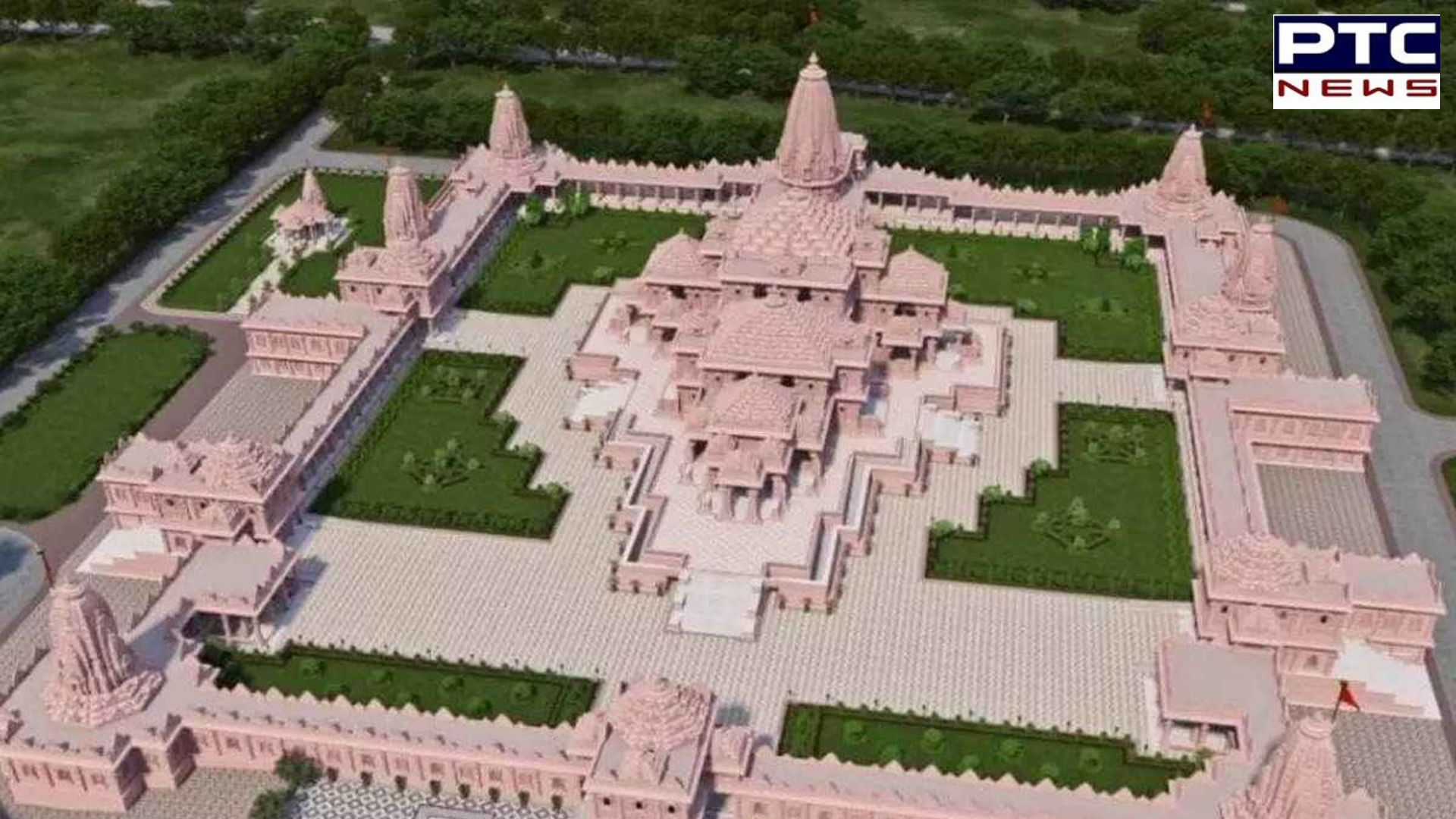From Nagara architecture to 5 Mandaps: Key features of Ram Mandir in Ayodhya

Features of Ram Mandir in Ayodhya: Amid the festive air in Ayodhya and the euphoria around the consecration of the grand Ram Temple which will be held over a span of seven days starting from January 16 to January 22, 2024, Shri Ram Janmabhoomi Teerth Kshetra trust unveiled the key features of the temple.
Also Read: No booze on Jan 22 in this state, check details
Key features of Shri Ram Janmabhoomi Mandir in Ayodhya
- The Shri Ram Janmabhoomi Mandir has been constructed in the traditional "Nagara" style which is characterised by features like a curvilinear spire (shikhara), a sanctum surrounded by an ambulatory path.
/ptc-news/media/media_files/zJrPxZnAhC5d8V138RiW.jpg)
- Nagara architecture is a style of temple architecture originating in North India.
- Shri Ram Janmabhoomi Mandir has a length of 380 feet, a width of 250 feet, and a height of 161 feet.
- Ram Mandir Temples have tall pyramidal towers called Shikharas that have a Kalash at the top. Pillars of the temples are carved with intricate designs and the walls decorated with sculptures and reliefs.
- Mandir is being constructed entirely using Bharat's traditional and indigenous technology. It is being constructed with particular emphasis on environmental-water conservation with 70% of the 70-acre area being left green.
- The Ram Mandir is three-storied, with each floor being 20 feet tall. It has a total of 392 pillars and 44 doors.
/ptc-news/media/media_files/UA4PTwvoOOw0SLy70XT5.jpg)
- Ram Mandir consists of deities, gods, and goddesses adorn the pillars and walls.
- Ram Mandir has entry from east, ascending 32 stairs through the Singh Dwar along with provision of ramps and lifts for the convenience of the differently-abled and elderly.
- The foundation of the Mandir has been constructed with a 14-meter- thick layer of roller-compacted concrete (RCC), giving it the appearance of artificial rock.
- The Mandir complex has a sewage treatment plant, water treatment plant, water supply for fire safety and an independent power station.
Sanctum of Ram Mandir
The Garbhagriha is the innermost sanctum of the temple, where the deity is enshrined. In the main sanctum sanctorum, there is the childhood form of Bhagwan Shri Ram (the idol of Shri Ram Lalla) and on the first floor, there will be a Shri Ram Darbar.
Also Read: Ram Mandir inauguration: UP introduces electric cars in Ayodhya to ferry pilgrims
/ptc-news/media/media_files/NooKUkj3khqShqez3nnr.jpg)
Mandaps in Ram Mandir
The temple consists of five Mandaps (Hall) namely Nritya Mandap, Rang Mandap, Sabha Mandap, Prarthna and Kirtan Mandaps.
The Parkota (rectangular compound wall) with a length of 732 meters and a width of 14 feet, surrounds the Mandir.
/ptc-news/media/media_files/sYxbhBhizuoPzqF08KOM.jpg)
Four corners in Ram Mandir
Shri Ram Janmabhoomi Mandir comprises of four corners dedicated to Surya Dev, Devi Bhagwati, Ganesh Bhagwan and Bhagwan Shiv. In the northern arm is a Mandir of Maa Annapurna and in the southern arm is a Mandir of Hanuman ji.
Near the Mandir is a historic Well (Sita koop), dating back to the ancient era. In the Shri Ram Janmbhoomi Mandir complex, there are proposed mandirs dedicated to Maharshi Valmiki, Maharshi Vashishtha, Maharshi Vishwamitra, Maharshi Agastya, Nishad Raj, Mata Shabri, and the revered consort of the Devi Ahilya.
/ptc-news/media/media_files/Gzf9pAVKXHyqxhTbDtXq.jpg)
In the southwestern part of the complex, at Kuber Tila, the ancient Mandir of Bhagwan Shiv has been restored, along with the installation of Jatayu. No iron is used anywhere in the Mandir and for protection against ground moisture, a 21-foot-high plinth has been constructed using granite.
Also Read: 10 Ways to keep you Healthy in Winters
